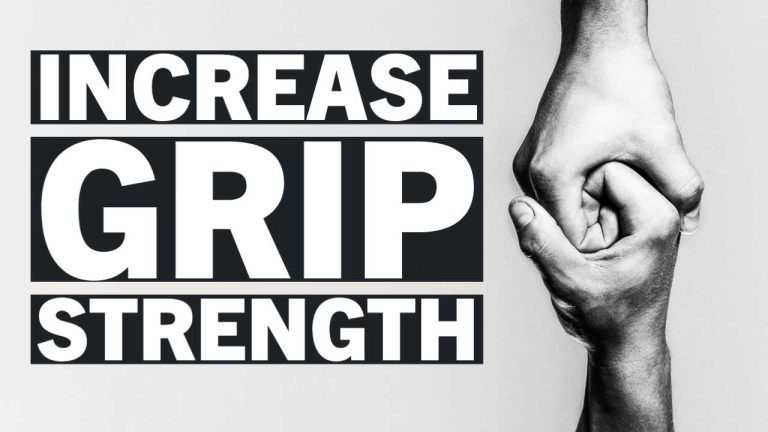Why Is No Pain No Gain An Exercise Myth? Let’s Debunk This!

ListedFit is reader-supported. When you buy through links on our site, we may earn a small commission.
Have you ever heard the old saying “no pain, no gain” and wondered if it’s true? This popular workout mantra has been used by athletes and fitness enthusiasts for decades, but is there any truth to it? Or, could it be just another exercise myth?
Quick Summary
It’s important to understand that discomfort during a workout is normal, but pushing through pain might not always be the best idea.
While some activities like running, swimming, and weightlifting may require pushing your body to its limits, it doesn’t mean experiencing pain is necessary for a successful workout.
In fact, feeling pain during a workout could be your body’s way of telling you that something is wrong.
As you dive deeper into this topic, you’ll uncover some of the myths surrounding the “no pain, no gain” mentality and learn how to exercise in a safe and effective manner.
Contents
Understanding the Concept of No Pain, No Gain

Why is no pain, no gain an exercise myth? It’s often used as a motivational saying, suggesting that the more effort and discomfort you endure during exercise, the greater the rewards and progress you’ll experience.
Although it’s true that pushing yourself is essential for growth, it’s crucial to differentiate between healthy discomfort and actual pain.
When you challenge your muscles through resistance training, such as weightlifting or bodyweight exercises (calisthenics), some level of discomfort is expected. This feeling is typically muscular fatigue, which is a normal response to your muscles working hard.
Muscle fatigue becomes an issue when it turns into pain. Pain is your body’s way of signaling that something isn’t right, and pushing through it can lead to injury. It’s important to recognize the difference between these two sensations and adjust your exercise routine accordingly. Here are some tips to keep in mind:
- Listen to your body: Pay close attention to the message your body is sending. If an exercise causes pain or discomfort that persists, it might be a sign that you need to back off or modify the exercise.
- Gradually progress: Rather than jumping into an intense workout regimen, slowly increase the intensity, frequency, and duration of your workouts. This approach minimizes the risk of injury and helps your body adapt to the demands placed on it.
- Rest and recover: Giving your body time to recover is essential for progress. Ensure you’re getting enough sleep, nourishing your body with proper nutrition, and scheduling rest days strategically.
Remember that consistency and smart training choices are more effective than pushing through pain to achieve fitness goals. Working within your body’s limits and gradually increasing the challenge will help you gain strength and endurance without risking injury.
What’s The Difference Between Pain and Discomfort?
Understanding the difference between pain and discomfort is crucial when engaging in any exercise routine. While it’s normal to experience some level of discomfort during a workout, pushing through pain can lead to unnecessary injuries.
Discomfort is often a sign that your body is being challenged, which is necessary for growth and improvement. When you feel discomfort in your muscles during a workout, it generally means you’re pushing yourself within safe limits and making progress. It’s common to feel this type of sensation when starting a new exercise program or increasing the intensity of your workouts(MyFitnessPal).
Pain, on the other hand, is a warning sign from your body indicating that something is wrong. Sharp, stabbing, or severe pain during exercise is not normal and should not be ignored (WebMD). Exercising through pain can increase the risk of developing serious or chronic injuries.
To prevent injuries and ensure safe workouts, pay attention to your body’s signals. Here are a few tips to distinguish pain from discomfort:
- Intensity: Discomfort is typically mild to moderate, whereas pain can be intense and sharp.
- Duration: Discomfort usually subsides shortly after completing the exercise, while pain may persist or even intensify.
- Location: Discomfort is generally felt in the muscles, while pain may be felt in the joints or tendons.
Remember to always listen to your body when exercising. While some discomfort is expected, it’s important to know when to back off and avoid pushing yourself into pain.
Why Is No Pain, No Gain an Exercise? Myth
In recent years, the concept of “no pain, no gain” has become a popular belief among exercisers. However, this idea can be misleading and might not reflect a healthy approach to physical activity. In this section, we explore the importance of listening to your body, the role of recovery and rest, and the risks of overtraining and injury.
The Importance of Listening to Your Body
It’s essential to pay attention to your body’s signals while exercising. While you may experience some discomfort or muscle fatigue after a workout, it should not be confused with severe pain. Instead, focus on finding the right balance between pushing yourself and respecting your body’s limits. This way, you’ll learn to differentiate between discomfort and injury, allowing for a more effective and safer workout.
The Role of Recovery and Rest
Rest and recovery play a critical role in maximizing your exercise gains. Contrary to the “no pain, no gain” mentality, this period allows your body to repair and rebuild muscle tissue, leading to increased strength and endurance.
Be sure to incorporate rest days and adequate sleep into your workout routine to further support your body’s healing process.
The Risk of Over-training and Injury
Adhering to the “no pain, no gain” belief can lead to over-training, in which an individual engages in excessive exercise without proper recovery time. The detrimental effects of over-training include increased fatigue, decreased performance, and reduced motivation (Today).
Moreover, pushing yourself beyond your limits raises the risk of injury as the body is subjected to consistently high levels of stress. To avoid these negative outcomes, prioritize a balanced workout schedule that allows for ample rest periods and self-monitoring.
Reframing the Concept of Progress in Exercise

It’s essential to think about progress in exercise differently rather than relying on the outdated and potentially harmful concept of “no pain, no gain.”
Setting Realistic Goals
Start by setting realistic and achievable fitness goals. Be sure to focus on your own capabilities, taking into account your current fitness level, limitations, and lifestyle.
Remember, your goals should be tailored to your individual needs and not based on someone else’s standards or expectations. By setting goals that are right for you, you’re more likely to stay motivated and enjoy the process.
Are You Focusing on Consistency?
One of the most important aspects of progress in exercise is consistency. Instead of pushing yourself to the point of pain, focus on establishing regular exercise habits. This means scheduling workouts throughout the week and sticking to that routine. When you make exercise a part of your daily routine, consistent progress is more likely, and your risk of injury decreases.
Measuring Progress Beyond Pain and Soreness
There are many ways to measure progress in exercise that don’t involve pain or soreness. Some of these include:
- Improved endurance: Track how long you can perform a given workout or exercise without feeling overly fatigued. If you’re able to maintain the same level of intensity for a more extended period, you’re making progress.
- Increased strength: Track the amount of weight you can lift or resistance you can handle in a specific exercise. Gradually increasing the weights you use or the number of reps you perform is a sign of progress.
- Better flexibility: Monitor your range of motion in different exercises or stretches. If you find that you can move more freely or stretch further than before, it’s a sign that your overall flexibility has improved.
- Physical changes: While outward physical appearance isn’t the sole indicator of progress, you might notice changes in your body composition, such as increased muscle tone or a leaner physique.
By focusing on setting realistic goals, consistently working towards those goals, and measuring progress in ways that don’t involve pain, you’ll be on the path to a healthier, more enjoyable fitness journey.
Final Thoughts
In debunking the “no pain, no gain” myth, it’s important to understand that pushing yourself through pain can actually hinder your progress. While some discomfort during a workout is normal, experiencing pain is not, and it may signal that something is wrong source.
Keep in mind that you can still achieve efficient results from exercising without pushing your body to painful limits. Pain does not guarantee better outcomes, and your overall goal should be to feel better both physically and mentally after a workout. For a more effective workout regimen, listen to your body and recognize when it’s time to slow down or even stop.
Remember that consistency, proper technique, and gradual progression are key components to effective exercise. Instead of relying on the “no pain, no gain” mantra, focus on finding activities you enjoy, setting attainable goals, and giving your muscles ample time to recover.
By understanding the distinction between discomfort and pain in exercise, you can better protect your body, avoid injuries, and set yourself up for long-term success in your fitness journey.
Author
-
Stuart Patrick is a health and fitness lifestyle journalist who writes for ListedFit.com.
“I've spent a lot of time trying to get in shape and change my body and I realised there are so many untruths in the health and fitness industry that can slow down or stop your progress, so I share my knowledge and experience to help others to cut through the BS.”
Latest entries
 MacaMarch 17, 2024Which is Better: Black or Red Maca? Comparing Benefits and Uses
MacaMarch 17, 2024Which is Better: Black or Red Maca? Comparing Benefits and Uses FitnessFebruary 18, 2024Join the Discount Club Today!
FitnessFebruary 18, 2024Join the Discount Club Today! KitchenFebruary 5, 2024Best Almond Milk-Making Machines 🥛 Cheap vs Expensive?
KitchenFebruary 5, 2024Best Almond Milk-Making Machines 🥛 Cheap vs Expensive? Barefoot ShoesDecember 18, 2023Can Barefoot Shoes Be Bad for You? Exploring the Potential Downsides
Barefoot ShoesDecember 18, 2023Can Barefoot Shoes Be Bad for You? Exploring the Potential Downsides
Affiliates:
This post may contain affiliate links that at no additional cost to you, the site may earn a small commission. We only recommend products we would use ourselves and all opinions expressed on this site are our own.
General Advice:
The information provided in this article is for general informational purposes only. It is not intended as a substitute for professional advice. Always consult with a qualified healthcare professional before starting any new diet, exercise program, or making changes to your health routine.
Accuracy Advice:
While we strive to provide up-to-date and accurate information, the content in this article may not reflect the most current research or medical guidelines. We encourage readers to do further research and consult with professionals for more personalized advice.
Our Recommendations:
The products and services mentioned in any of our articles are recommended based on our independent research and personal experience. We are not sponsored by any company. We aim to suggest products and services we believe are of high quality and could be beneficial to our readers.






